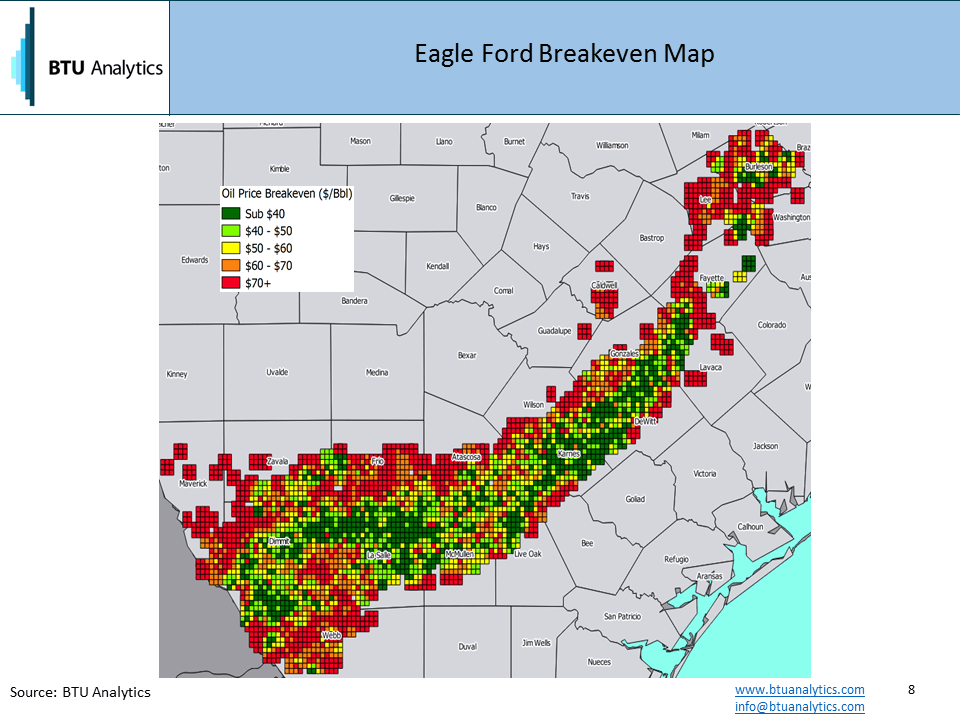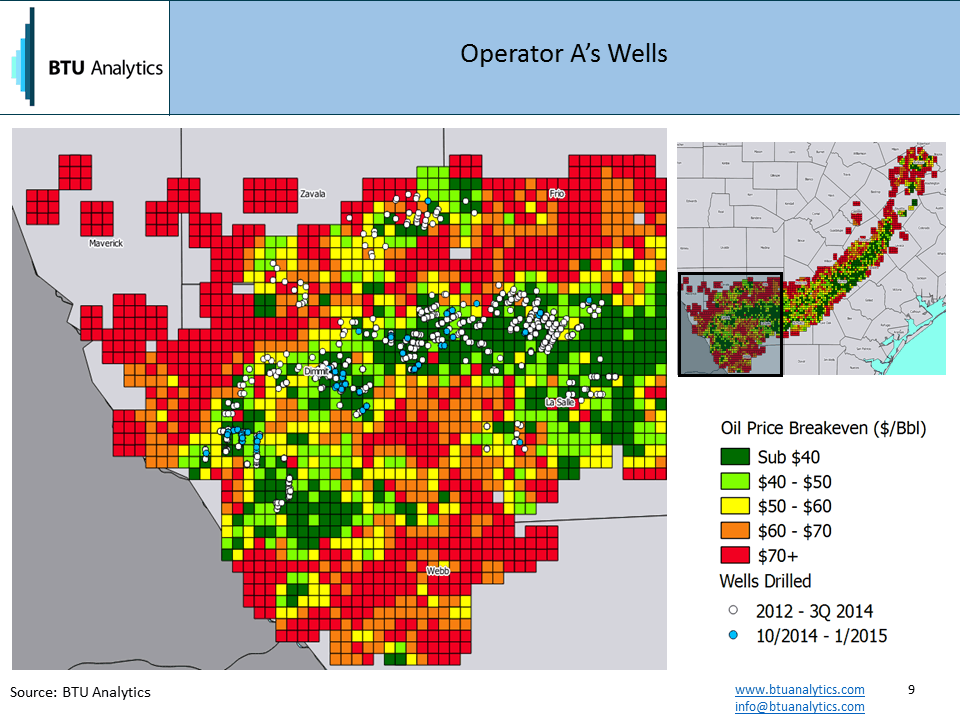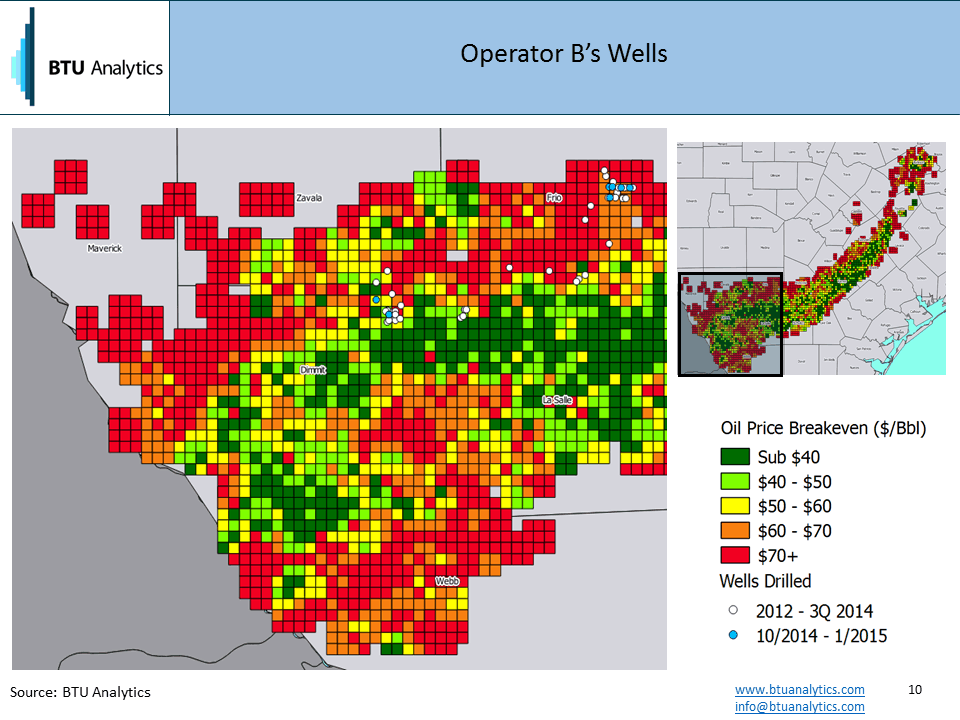As 2015 capital budgets sink, and worries about the future abound, producers have been reassuring investors by promising gains in efficiency to make up for planned cuts. Often producers make the promise of high grading, meaning they are going to focus on drilling their most productive and profitable acreage, thereby boosting their production numbers while at the same time reducing the number of new wells and expenditures. While these promises may sound reassuring, the question is: can producers actually do it?
As part of our monthly Upstream Outlook, we will be monitoring the progression of high grading in some of the major plays. This month, we begin our observations with the Eagle Ford.
Before we are able to monitor high grading, we need to delineate the acreage in the Eagle Ford, so we know where the core “sweet spot” acreage is and where the uneconomic “fringe” acreage is. To do this we used historical well production data and our BTU Analytics economics models to plot breakeven results on a well-by-well basis. Next, we overlaid a grid on those points and determined an average breakeven for each cell of the grid. This gives us a good visualization of acreage quality in the Eagle Ford, and we can now monitor how producers move their drilling over time.

Now, to return to the question at hand. Let’s use an illustration of two Western Eagle Ford operators, Operator A and Operator B. Operator A is an operator with a large swath of acreage spread out over multiple counties.

As we can see here, Operator A has been focusing its drilling in the core of the Eagle Ford. Notice the difference between the northern fringe and the central core. In the fringe there is almost a complete lack of blue circles (recent wells). However, in the core we find a high density of new wells. This is the essence of high grading.
Next, let’s look at Operator B.

Operator B is clearly a smaller operator, who does not have the same access to diverse acreage such as Operator A. When Operator B wants to high grade, there are not many options, so they can only high grade to their best available acreage, even if it is uneconomic at current prices.
We need to remember that high grading isn’t a panacea for all producers. The effect of high grading will be limited by, among other things, the quality of the acreage that each operator owns. So be aware: not all high grading is created equal. For more on breakeven mapping and high grading, be sure to see this February’s Upstream Outlook.









